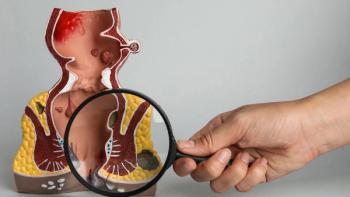
Researcher Highlights the Need for Curative Approach to Mantle Cell Lymphoma Treatment
While many advances have been made in the treatment landscape of MCL, the need for curative treatment options may be where future research goes.
Mantle cell lymphoma (
“It's going to be very interesting to see (where
Treatment Options
For younger patients with aggressive disease, initial treatment consists of chemotherapy in combination with Rituxan (rituximab), followed by autologous stem cell transplantation — when patients receive stem cells from a related or unrelated donor. In addition, consolidation high-dose chemotherapy followed by autologous stem cell is often utilized to prolong remission in younger, medically fit patients.
Those who are older are typically treated with less intensive chemotherapy followed by maintenance therapy with Rituxan.
FDA Actions
In 2013, the Food and Drug Administration (FDA) granted an accelerated approval to Imbruvica (ibrutinib) for the treatment of patients with MCL who had received at least one prior therapy. Four years later, the agency also granted an accelerated approval to Calquence (acalabrutinib) in patients with relapsed/refractory disease. Although Imbruvica and Aclquence have not been compared head-to-head, the latter may have better tolerability, according to LaCasce.
More recently,
“Ibrutinib is a very active drug, as is acalabrutinib,” LaCasce said. “We’re using a lot of acalabrutinib in the first relapse setting because it is a little bit better tolerated than ibrutinib, with very similar efficacy. That has been a great option, and then there is venetoclax, too. Venetoclax is a very well-tolerated drug with the exception of the risk of tumor lysis, which has been very well laid out in terms of how you manage that.”
Moving Forward
While many advances have been made, patients with MCL can still develop a resistance to Bruton kinase inhibitors — which is where CAR-T cell therapy may play a role.
Yescarta (axicabtagene ciloleucel; axi-cel) is currently being evaluated in the phase 2 ZUMA-2 trial — designed to evaluate the therapy in patients with relapsed/refractory MCL.
“We need more curative options; perhaps CAR T-cell therapy (will be curative),” LaCasce said. “We presume that most patients will fail autologous stem cell transplant at some point, so having more trials, more novel immunotherapy treatments, combinations of CAR T-cell therapies, other approaches, or off-the-shelf immunotherapies, are where we need to see the field going.”
This article is adapted from an article that originally appeared on




